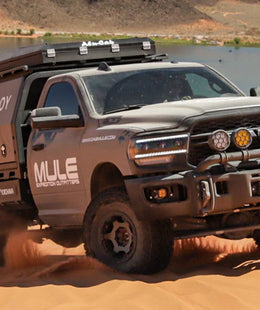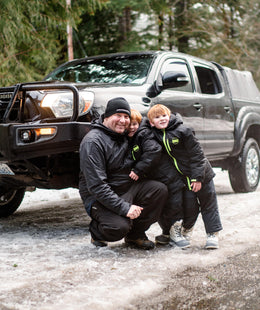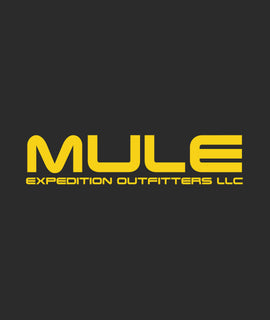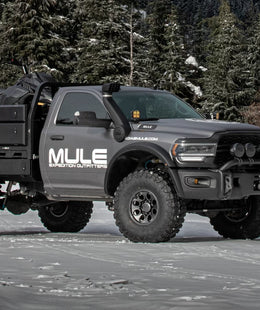When choosing a new vehicle to outfit for overland travel, several key topics need to be researched before writing a check - do people still write checks?
![]()
Powertrain - Petrol vs Diesel
If you are like me, for the past several years, I have read about and looked at photos of diesel Toyota Hilux pickups and Land Cruisers traveling the remote parts of the Australian Outback. So naturally, we have always fantasized about owning a diesel-powered overland vehicle.

But depending on your area most frequently traveled, diesel may not be the best option. If you are only traveling within the United States or Canada, then both a diesel or gasoline powertrain are a pretty safe bet for both fuel quality and engine repair parts. However, in other parts of the world, diesel may not be as available or "clean enough" for modern-day engines. In these cases, a petrol or gasoline vehicle would be a better choice. A good rule of thumb, if you are planning to travel to a specific part of the world, look up the population to motorcycle ratio. In many countries, motorcycles are the main form of transportation, and motorcycles require gasoline making it a safe bet to be readily available.
Transmission - Automatic or Manual
The automatic vs manual transmission for off-roading is right up there with the Toyota vs Jeep debate. Regarding this comparison, do your research on the vehicle you are thinking about purchasing and see what others are reporting for transmission reliability and performance. Me personally, I have owned and off-roaded a manual Jeep for over 20 years. But with the reliability and performance of the new 8-speed automatic that's coming in all current Jeep models, I would switch in a heartbeat.

Gross Vehicle Weight Rating
This is the big one that many people don't even pay attention to or know about. Let's be honest, when we pack up to head out to the woods or desert for the weekend, do we really honestly pay attention to how much weight we are loading into our vehicles? Probably not.
Every vehicle sold has a Gross Vehicle Weight Rating or GVWR. This rating is a specified engineered maximum weight rating for the vehicle as it left the factory. Its a number determined to be the maximum weight of the vehicle to be safely operated without damaging factory structural components such as the frame, axle housings, and suspension components. The rating takes into account the driver, passengers (even your dog), all fluids, cargo, and aftermarket accessories.

A lot (or maybe none) of overlanders will only pay attention to the payload rating of the vehicle. The payload rating is a simple subtraction of the curb weight from the GVWR. But what some don't realize, the more aftermarket accessories, or in my case, the more burritos I consume, the lower your payload rating will be.
If you want to get super accurate on your payload capacity, weigh your vehicle with all fluids topped off and with your regular passengers inside, and subtract that from the GVWR. At that point, you will know where you stand. Unfortunately at this point, especially if you've installed aftermarket equipment such as bumpers, winches, racks, and so on, you may not have much left for cargo or like many, exceeded the GVWR.
At this point, you have a few options to free up some payload capacity. Remove everything and anything you don't need. Do you need the rear seats for your trip, in a lot of cases this will free up at least 50 lbs. Evaluate your trip needs, do you really need 100 gallons of European carbonated water or that 4000-watt generator to power your Sou Vide system? Knowing what you will actually need on each trip can save a lot of weight and make your vehicle that much safer to operate.

Premium Options
This is another personal opinion and sometimes a want, not a need. But premium options that you check the box on can affect the payload capacity. Believe it or not, the more accessories and options you add up, the heavier your vehicle becomes. Do you really need that built-in center console espresso maker or the Bluetooth rear seat waffle maker? Check the box if you really need them, otherwise, save the weight for something usable, like an overlanding leaf blower or solar-powered bug zapper.
Aftermarket Support
Time for the fun part, the new vehicle you are looking at, what kind of aftermarket support does it have? Luckily most of the more popular platforms used for overlanding have a ton of support. But a few aftermarket components should be considered a priority and you want to make sure they are available. The first, a quality rated winch bumper or winch mount system. Although you should never travel off-road alone, sometimes your friends just don't want to come out and play. In these situations, you always want to be able to self recover, and winch should be one of the first accessories installed.

The next should be a suspension system. Back to payload capacity, even though your vehicle is rated for a 1000 lb payload, it doesn't mean your suspension will be happy with the added weight. You want to find a good quality suspension company that offers a system for your vehicle based on load capacity, not just lift. And no, the suspension will not increase your load carrying rating, but it will help control the weight in a safer matter.

Gearing and Differential Locks
Depending on the vehicle, changing the differential gear ratio may be required. Changing the ratio will take some of the stress off parts of the drivetrain when pushing the added weight of a vehicle packed to the brim with overlanding gear and outfitted with aftermarket accessories. In my experience, most popular platforms are fully supported by aftermarket gear manufacturers offering options tailored to just about everyone.

Do you need differential lockers? That will be dependent on the terrain you travel. Many newer vehicles come with either a factory locking differential or limited slip. In these cases, if you are just exploring the logging roads of the Pacific Northwest, you will be fine with the stock system. But if you are a little more adventurous traveling (in a group of course) in wet or snowy terrain, it would be a good idea to upgrade to a selectable locker like the ARB. With a selectable locker, you have the best of both worlds. A very street-friendly system when traveling on high-traction surfaces, but with the option of 100% traction with the flip-of-a-switch when needed.
One other thing to note, factory differentials take on more stress as the vehicle gets loaded with the additional weight. This is an added stress that the factory components are not designed to handle. Most aftermarket differentials are designed specifically for the added stresses of off-roading.
So there you go, that should get you started on your new vehicle research journey. Let us know what vehicle you are thinking about purchasing in the comment section below. If you are looking for more guidance on your next build, contact our staff. Mules staff has over 250+ years of experience and can you help you with your next overland vehicle build.
Blog Post by Steven M. Bisig - Mule Marketing Dept.




